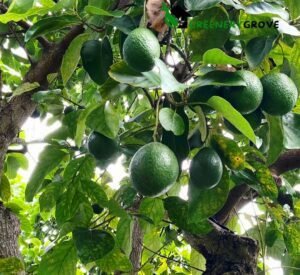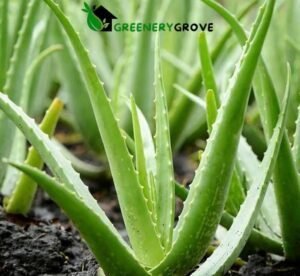A popular tropical fruit, guava is grown in many tropical and subtropical areas. The typical guava is A little tree in the Myrtle family. Psidium guajava is also known as lemon guava or apple guava and is indigenous to Mexico, Central America, the Caribbean, and northern South America. Other species in the Psidium genus, such as the pineapple guava and the strawberry guava, are also referred to as guavas.
Origin of Guava
Guava is a native of South America. In the 17th century, the Portuguese brought it to India, where it is presently growing for commercial purposes. Furthermore, Mexico, Brazil, and Thailand grow guava. According to Morton (1987), It is thought that the guava evolved in the region that stretched from southern Mexico into or across Central America. The popularity of guavas spread to other parts of the world, including Asia and Africa, where they became an integral part of the local cuisine and placed on the list of favorites.
Usually in many tropical and subtropical countries guava is cultivated. For commercial purposes, several species of guavas are grown. Internationally the most widely traded species is apple guava. Since the mid-1900s guavas have been farmed commercially and have given rise to many cultivars.
Derivation Of Guavas: Probably in the middle of the 16th century the word “guava” appears. The word “Guava” came from the Taino, an Arawak language, Where it was guayaba, meaning guava tree, and came from the Spanish for guayaba, its form has been similar to many European and Asian language adaptations.
Scientific Classifications of Guava
The guava belongs to the Myrtaceae family. Around 150 species in the genus Psidium, with Psidium guajava being the most significant fruit.
Scientific name: Psidium guajava
Family: Myrtaceae
Order: Myrtales
Genus: Psidium
Kingdom: Plantae
Types and tastes of guavas that people love
Lemon Guava: Scientifically known as Psidium cattleyanum, often called cattley, Strawberry, or Cherry guavas, is a tiny tree in the Myrtaceae family. Generally, it grows to a height of 2-4 meters. An English horticulturist William Cattley is honored by the species name. Although most of the trees found in Psidium cattleyanum are between 2 and 4 meters tall, the tree can grow as high as 13 meters. When the plants are three to six years old, fruit starts to appear.
White or Yellow guavas: Generally, mild, acidic fruit with little to no aroma is produced by guavas with white or yellow flesh. Though low in calories, it packs an impact containing several potent nutrients that help with blood sugar regulation, heart health, digestion, and weight loss.
Xali Guava: It has a similar taste to the white guava, not as strong, not as sweet. On this one seeds are not big and crunchy and it’s fully ripe. Typically it tastes pretty good and sweet.
Benjamin Guava: This guava is generally much larger it’s larger than two golf balls. It’s a little more firm. It tastes seedless when consumed. It has a fruity type mild flavor. This guava is not as ripe as other verities.
Ruby Supreme Guava: If we compare ruby supreme guava to a golf ball It’s the same size as it. A little bit of blossom and it has almost no smell. There are a lot more seeds covering a bigger area. It’s almost like a strawberry flavor.
Red Malaysian Guava: It’s size little bigger than a golf ball if we compare. It’s not completely ripe and it tastes like a little bit of bitter.
Mexican cream guava: It’s probably not completely ripe. Seeds themselves take up lots of space. It does not taste bitter and almost like a pineapple. And it’s seed pretty hard.
Planting and Growing Guava Trees
If you want to stay healthy and eat nutritious fruits then guava will be the best option. Guava is a tropical tree and requires a hot and humid climate. Tropical trees like guava are not often found in cold continents and climates. They are easy to grow outdoors. Alternatively, they can be simply cultivated as houseplants indoors. Just because it is a tropical tree it needs lots of sun rays and humidity to grow. First, you have to choose a place gently which gives guava-free space to flourish and be planted away from the buildings. Constructions and protected from the wind. However, you have to give guava trees 4 meters to 8 meters apart.
In June and July generally in summer guava trees are planted. If you live in a winter region and you love to eat guava you can also grow the tree indoors or partially indoors. Make sure it receives full sunlight Because it needs humid conditions also there’s never a guarantee indoor guava trees bear fruit. Guava should be planted in a large, wide pot and set on a small, movable platform so that it may be simply transported around as needed. Choose a window that receives a minimum of six hours of sunlight per day for the tree. In addition, you will need another tree for pollination if you want fruit. In a sunroom and greenhouse guava can grow. In basic demand, you can grow it inside at any time.
Health benefits of guava leaves
Guava leaves contain medicinal properties and they help to cure many diseases. These leaves have been used over the years for these qualities. They contain vitamins C, A, and potassium, and many health benefits. It boosts your immune system, enhances your health, controls blood sugar levels, improves your skin, good for weight loss.
Economic Importance of Guava Trees
Genuinely, the Guava tree has lots of economic importance. This fruit is a great source of antioxidants vitamins and minerals. Because of its hardy nature and profit-bearing, it is grown on a commercial scale. By cultivating guava, various farmers are not only benefiting economically but also fulfilling their family’s nutritional needs.
Guava Benefits for your health
“He who has health, has hope and he who has hope, has everything” – Arabian Proverb
Everyone is now health conscious because health is wealth, to maintain a healthy life consuming guava plays one of the important roles. Guava has many health advantages such as anti-inflammatory, anti-hypertensive, antioxidant, antidiabetic, analgesic, hypocholesterolemic, antispasmodic, antibacterial, and astringent qualities.
More Blogs






Exploring Daffodils: From Origins to Symbolism and Garden Tips


Alocasia: The Majestic Elephant Ear Plant – A Guide To Varieties, Care, And Decorative Ideas


A Comprehensive Guide of Aloe Vera: Benefits, Development, and Uses






this article is very helpful , thank you greenery grove